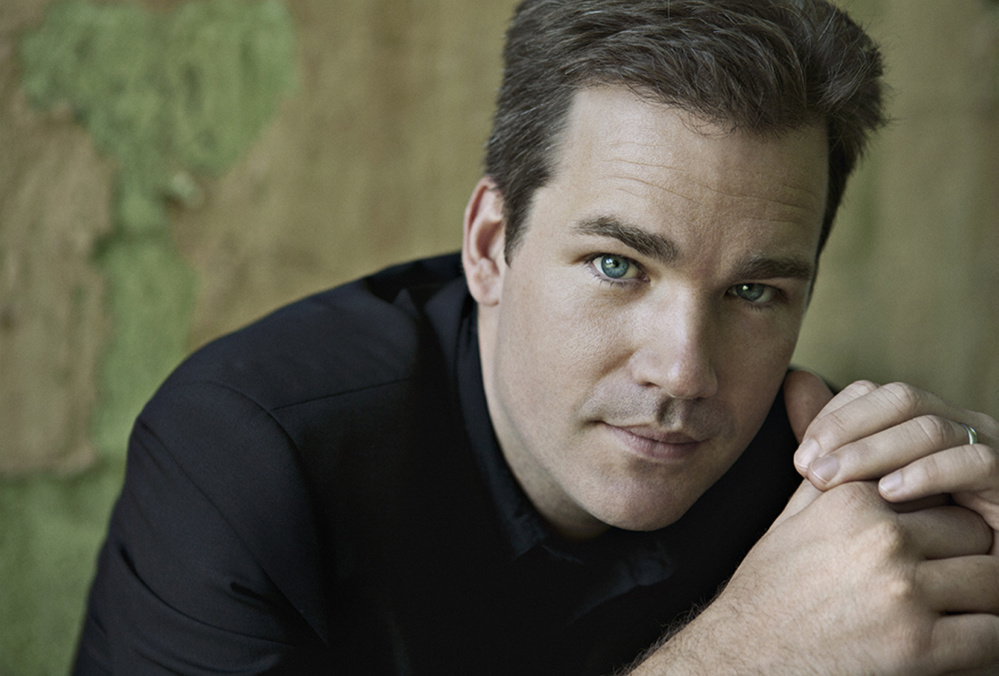Organists who perform on the Kotzschmar organ at Merrill Auditorium for the next few years can be expected to test the recently restored instrument’s strengths, particularly if they knew the instrument before it was refurbished. Ken Cowan, who opened the season’s Friends of the Kotzschmar Organ series on Saturday evening, was familiar with the instrument both as a listener and as a player: John Weaver, one of his teachers, gave an annual recital on the Kotzschmar for 50 years, and Cowan attended the last of them. He gave a recital of his own shortly before the restoration, and in his pre-concert talk, he said that although he admired the instrument generally, he found that its softer timbres were often overwhelmed by wind noise.
No longer. Several of the works Cowan played on Saturday – Sifgrid Kar-Elert’s “The Soul of the Lake” and the first part of Engelbert Humperdinck’s “Hansel and Gretel” Prelude, for example – seem to have been chosen specifically because they included delicate passages, and the sound Cowan drew from the organ in those passages was clear and silken, and entirely untroubled by extraneous noise.
But Cowan, not surprisingly, tested the organ’s more robust symphonic timbres as well in a colorful program that was split between transcriptions of orchestral scores and virtuoso works by organist-composers. Among the latter, the most striking was Cowan’s encore, George Thalben-Ball’s “Variations on a Theme of Paganini,” an extraordinary workout in which the first nine of the 10 variations on Paganini’s Caprice No. 24 were played solely on the pedals, Usually, the pedals are reserved for deep bass tones, but Thalben-Ball’s piece requires an expansive approach to registration, which Cowan expanded further in an exploration of the Kotzschmar’s enormous palette, bringing in ethereal high tones, assertive reeds and even a touch of percussion.
He opened his recital with a bold stroke, Wagner’s “Die Meistersinger” Prelude, in a version that combines arrangements by Samuel P. Warren and Edwin Henry Lemare, Portland’s municipal organist in the early 1920s. The grandeur of the score’s opening survives the translation nicely, as does the graceful love theme, but many of the more densely orchestrated passages sound murky on the organ, and some of the transitions between themes – which, by their nature, demand the striking color changes Cowan gave them – seemed to hang together awkwardly.
The “Hansel and Gretel” Prelude and the sparkling Scherzo from Mendelssohn’s incidental score for “A Midsummer Night’s Dream” worked far better. The Humperdinck’s transparent string textures, dramatic pacing and contrastingly colorful passages (a trumpet call, for example) are well-suited to the organ, and Cowan moved through them smoothly. The ebullient, fluty figuration of the Mendelssohn is perfectly organ-ready as well, and showed off the fleetness and precision of Cowan’s technique. Neither arrangement was credited in the program book, but Nathan A. Randall’s program notes – available only online, on the Friends website, foko.org – attribute the Mendelssohn transcription to Cowan.
Transcriptions can be fun and challenging, and organ fanciers adore them. But the works composed for the instrument were the real heart of Cowan’s program. The Karg-Elert piece, a compact tone poem rich in evocative chromaticism, is the opening panel of the composer’s “Pastels from the Lake of Constance” (Op. 96), and draws an appealingly misty portrait of both the lake’s placid surface and the darker mysteries of its depths.
Louis Vierne’s “Feux follets” (Op. 53, No. 4), similarly, is a flight of the imagination that uses translucent wind timbres and brisk, descending chromatic sequences to capture the flickering, intangible character of a will-o’-the-wisp. And the “Variations Sur un Vieux Noël” (Op. 20) by Vierne’s pupil, Marcel Dupré, subjects an antique French Christmas hymn to a wide-ranging tour of organ styles, including one steeped in Bachian counterpoint.
Cowan gave these French scores readings so thoughtful and richly characterized that you might almost have missed the virtuosity they demanded. He supplied that amply, but also subtly, saving any interest he has in unbridled showiness for the Thalben-Ball encore. Still, in the closing work on the program proper, Max Reger’s “Fantasy on the Chorale ‘How Brightly Shines the Morning Star'” (Op. 40, No. 1), he found a point halfway between those extremes. He tested the organ’s variety, moving from attractively glassine, pianissimo flute timbres to full-throttle reed and brass sounds, and dispatched Reger’s brisk passagework easily. Yet the lasting impression, created by the contrast between the score’s chaotic opening and the formal beauty of its closing fugue, was of musicianship, rather than display.
Allan Kozinn is a former music critic and culture writer for The New York Times who lives in Portland. He can be contacted at:
allankozinn@gmail.com
Twitter: kozinn
Send questions/comments to the editors.



Success. Please wait for the page to reload. If the page does not reload within 5 seconds, please refresh the page.
Enter your email and password to access comments.
Hi, to comment on stories you must . This profile is in addition to your subscription and website login.
Already have a commenting profile? .
Invalid username/password.
Please check your email to confirm and complete your registration.
Only subscribers are eligible to post comments. Please subscribe or login first for digital access. Here’s why.
Use the form below to reset your password. When you've submitted your account email, we will send an email with a reset code.